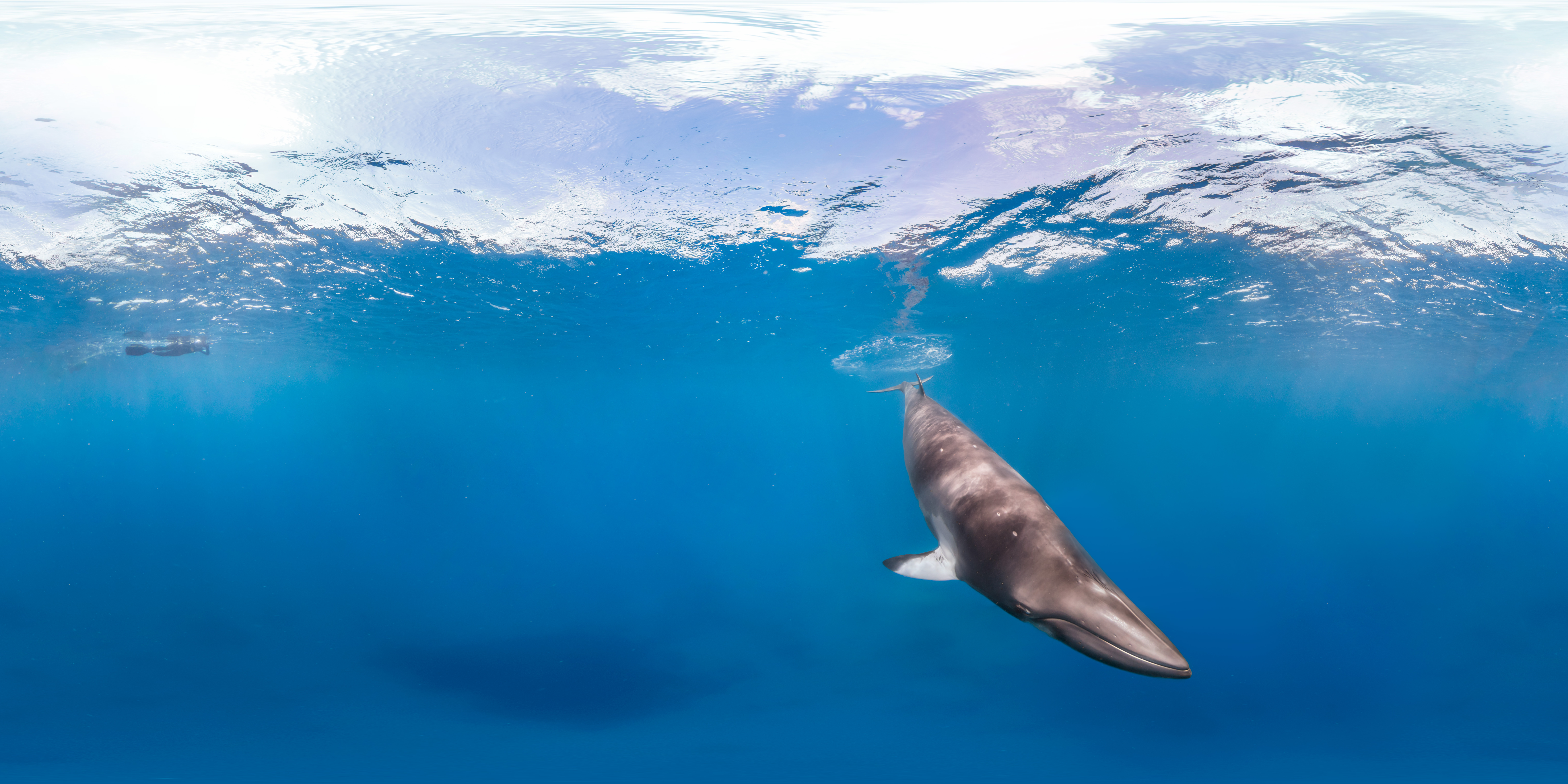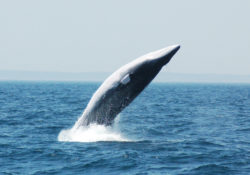
Sea Wonder: Minke Whale
Did you know that Minke whales (Balenoptera acutorostrata) are the smallest and most commonly sighted of the thirteen species of great whales that inhabit our ocean? Fun fact: Minke whales received their name from a Norwegian novice whaler named Meincke, who supposedly mistook one for a blue whale.

Photo Credit: The Ocean Agency/ Coral Reef Image Bank
Description
Minke whales have all of the characteristics of rorqual whales, a class of eight species of baleen whales, including streamlined, torpedo-like appearance, pointed heads, small fins compared to their body size, and grooves along their throat that expand when they feed. While this species is the smallest of the great whales, they are still quite large, weighing up to 20,000 pounds (10 tons) and reach lengths of about 35 feet when fully grown, with females typically being slightly larger than males. Their mouths contain as many as 300 baleen plates made of keratin instead of teeth that they use to filter food out of seawater when they feed.
The backs of minke whales are dark grey or black with bright white bellies, white patches beneath their pectoral flippers, and diagonal white bands that span the topside of their flippers. Sometimes, they also have a white chevron-like mark located behind their heads. Like other baleen whales, minke whales have two blowholes atop their heads for breathing. At the end of their bodies are their tail flukes and a little more than halfway down their backs are their dorsal fins, both of which are made of cartilage and change over time, allowing us to tell individuals apart.
Diet & Habitat
Minke whales are known as gulpers, which means they open their mouths to pull in seawater and whatever might be swimming in it before closing their mouths part way, using their tongues to force the water out through their baleen plates, and swallowing their prey whole. As they gulp, their throats expand like the pouch of a pelican. Since they feed this way, minke whales don’t have much control over what they eat except for choosing when to feed, so their diets can include plankton, crustaceans, and varying species of fish.
Minke whales are found in many locations throughout the world’s ocean and are seen in the open ocean and closer to coastlines. There are two existing species (the northern/common minke whale and the Antarctic minke whale), with a potential third species, the dwarf minke whale, that is currently considered a subspecies of the northern species and doesn’t have its own scientific name. The distribution of minke whales depends on their species as well as individual traits, but they are seen in polar, temperate, and tropical waters worldwide. They migrate throughout the year, spending their summer feeding seasons in cooler waters where food is plentiful and winter breeding and calving seasons in warmer, tropical waters. Sanctuaries within the National Marine Sanctuary System in which minke whales are seen include Olympic Coast, Stellwagen Bank, Monterey Bay, and Cordell Bank.
Life History
Depending on where they live, minke whales reach maturity between three and eight years old, which is also when they reach full size. They travel in groups of varying sizes, with as many as 400 whales being observed in a single hunting group, though mature females and their calves seem to travel together, mature males can be found alone or in small groups, and weaned juveniles seem to travel alone and have a smaller range than adults. To communicate with each other, they use both vocalizations like whistles and clicks along with body language such as slapping fins on the water.
Scientists don’t know much about minke whale mating behavior, though it seems calving rates peak in the winter months (which depend on which side of the equator they live on) after nearly a year-long pregnancy. Calves are born live and travel with their mothers, nursing for between four and six months before beginning to eat solid foods and being weaned. Calves will stay with their mothers for about two years or until their mother has another calf. Experts believe the maximum lifespan for minke whales is nearly 50 years.
Threats & Conservation
Minke whales were historically hunted by commercial whalers but the demand was lower than other species due to their smaller size. They continue to be commercially hunted by whaling nations but in low numbers that don’t appear to put them at risk of extinction. As a result, through most of their range, minke whales are considered stable and a species of least concern, though in the United States they receive protections under the Marine Mammal Protection Act of 1972. However, other threats like entanglement in fishing gear, vessel strikes, ocean noise, overfishing, and climate change (which changes prey availability and distribution) are a risk for this and other species of great whales.

Photo Credit: Anne Smrcina/NOAA
